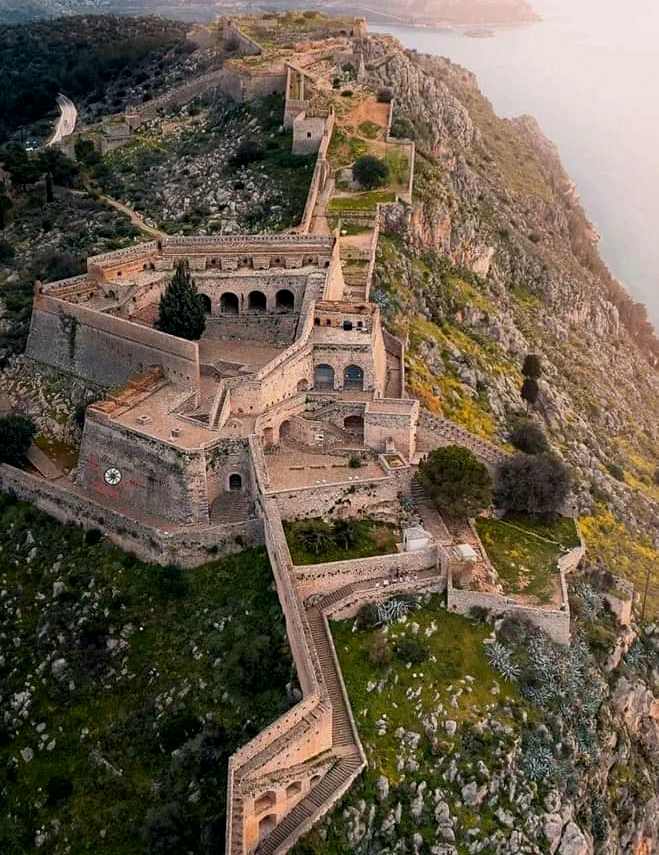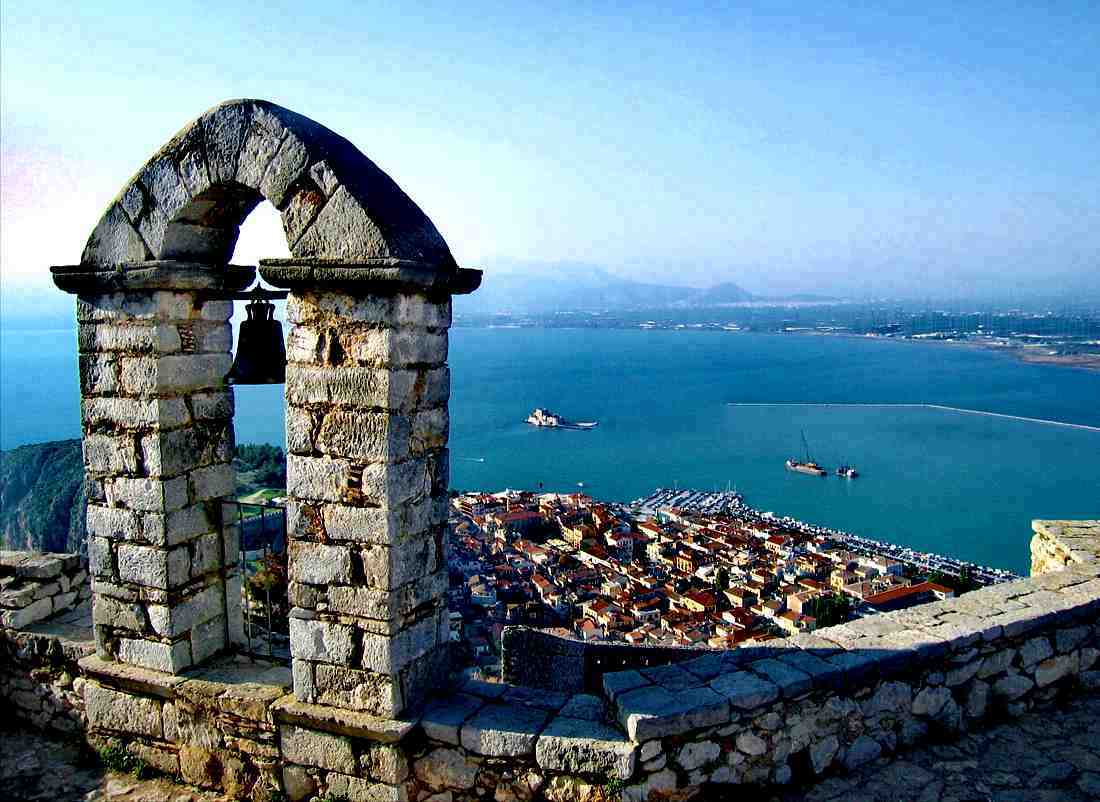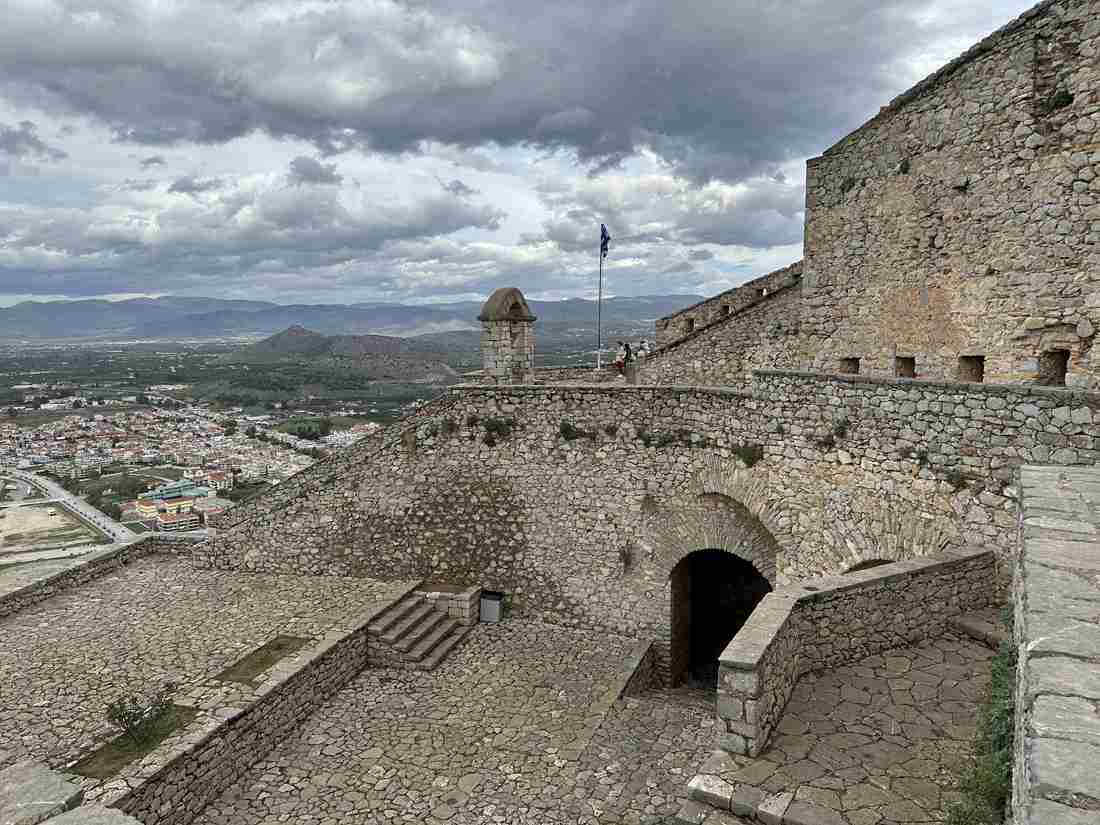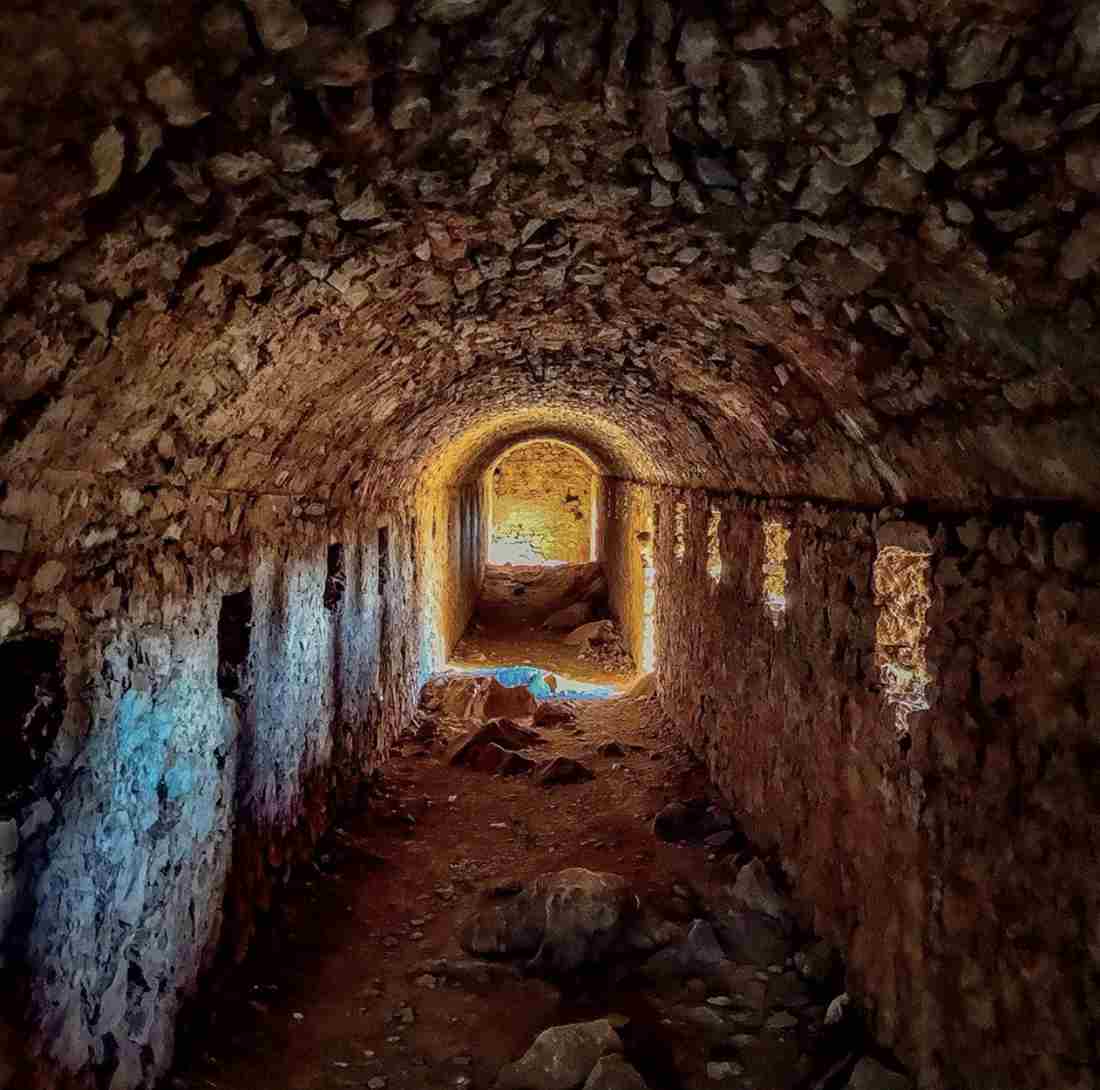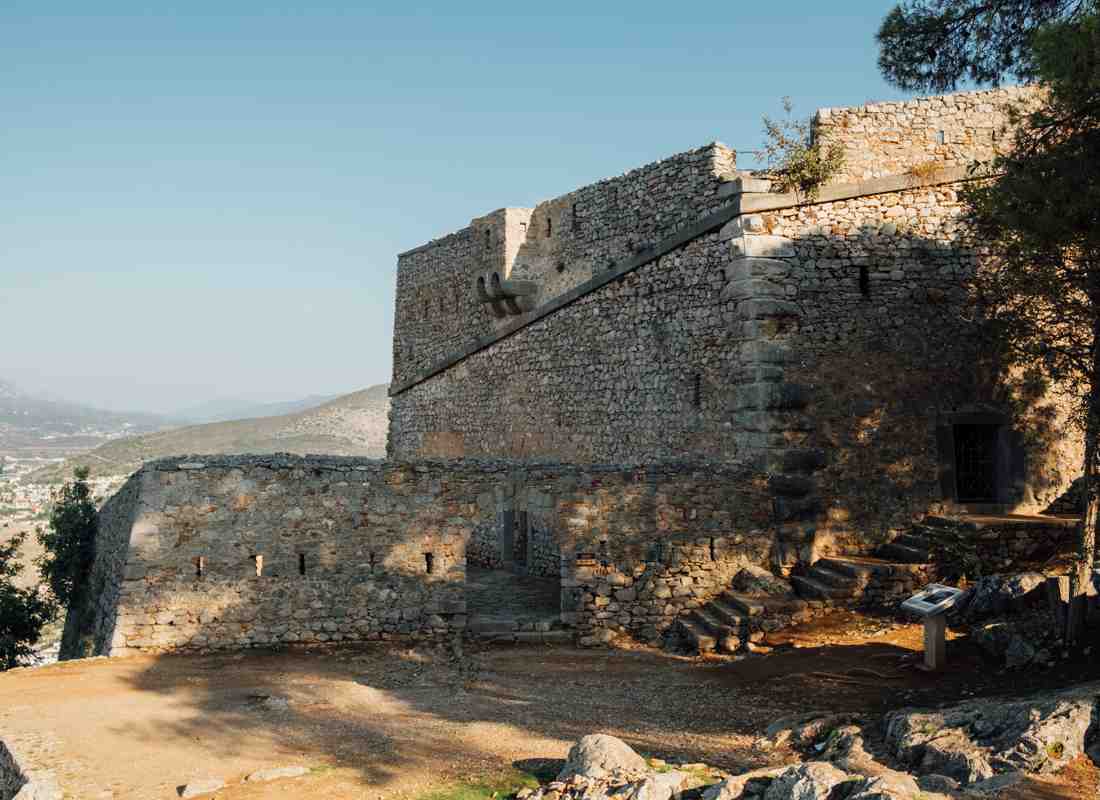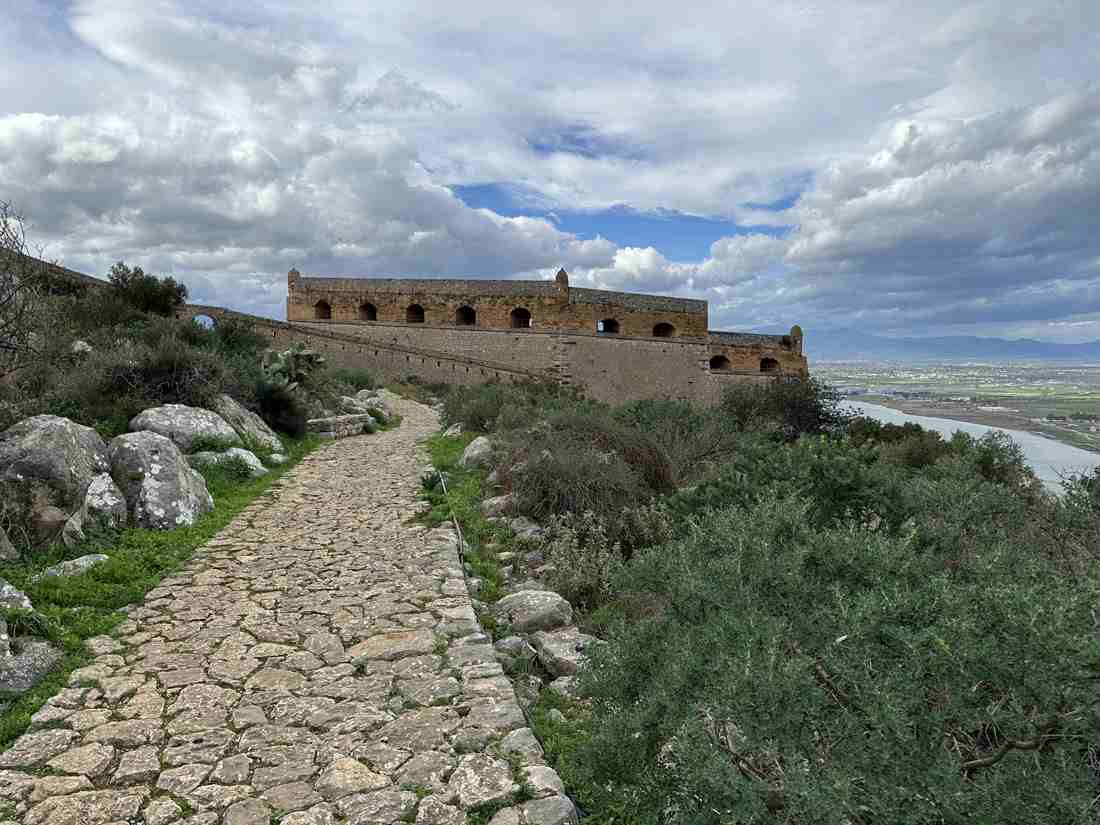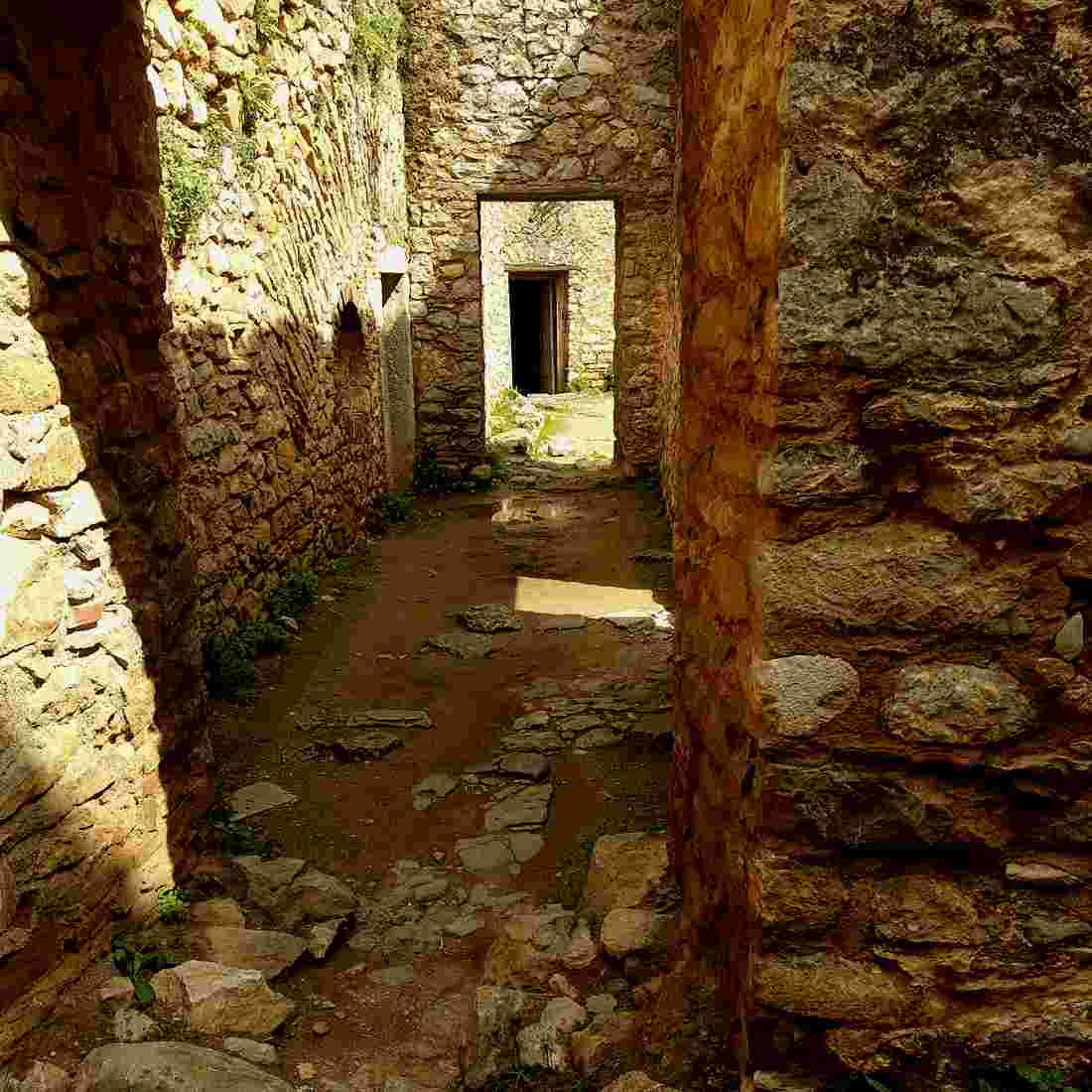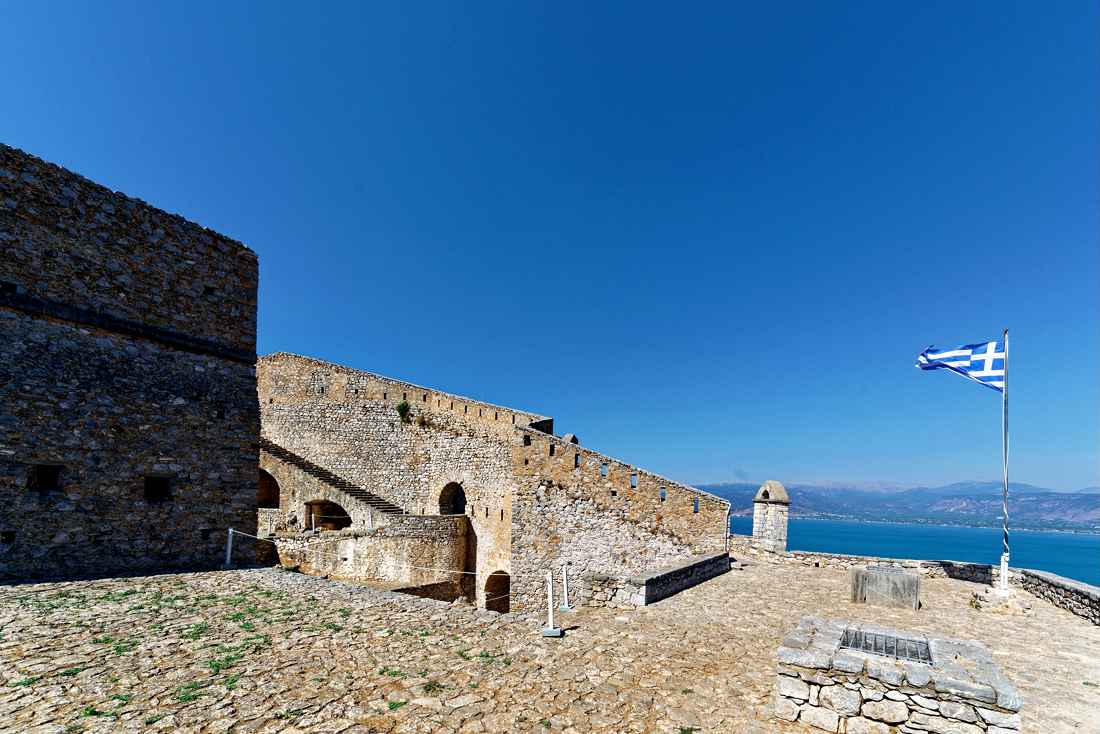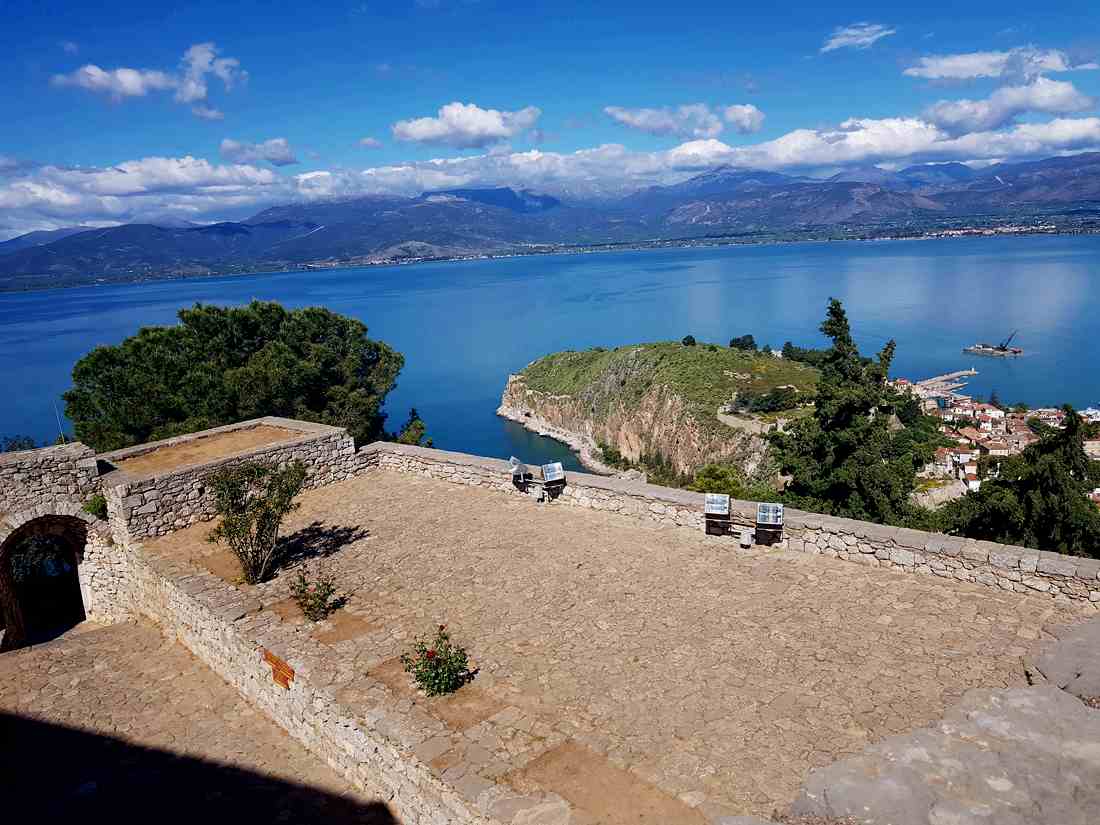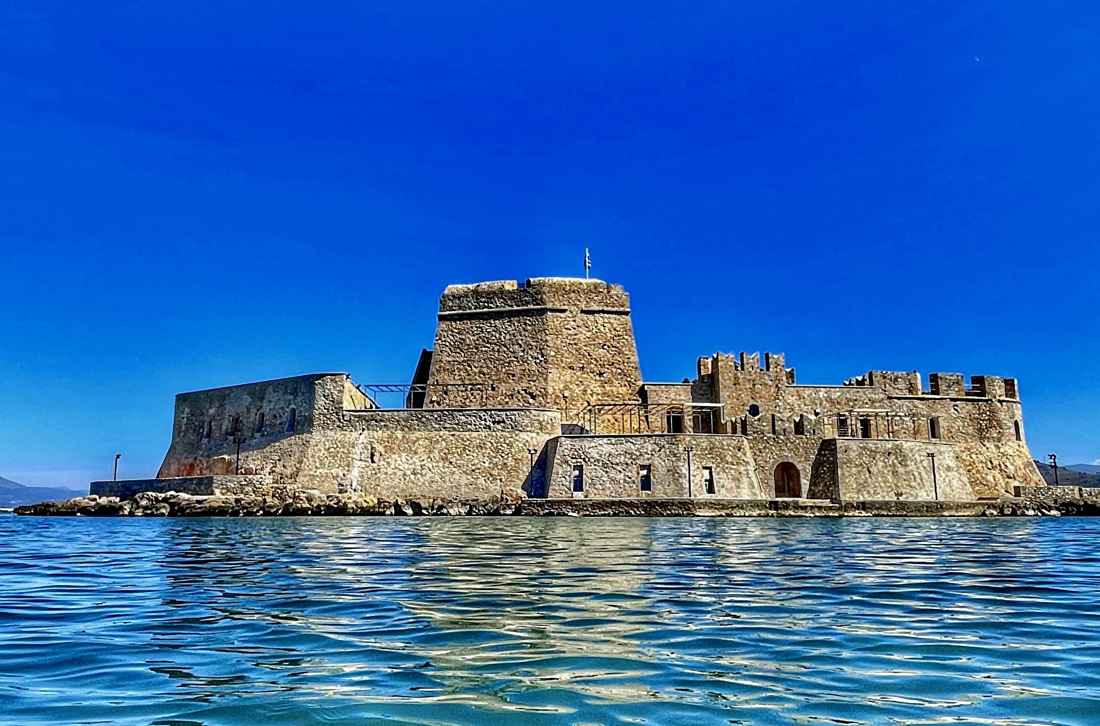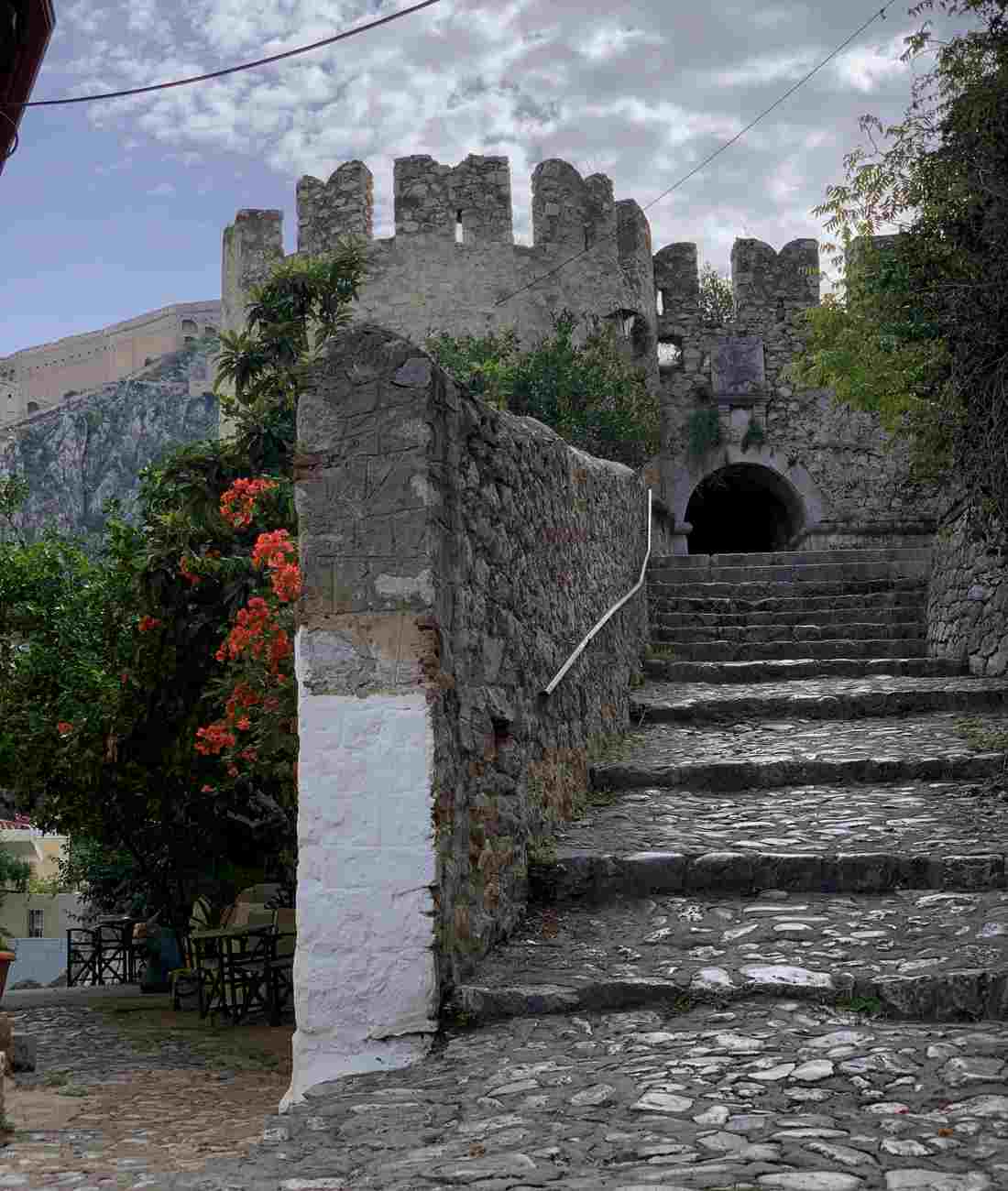
Palamidi Fortress
The Palamidi Fortress is one of the most important achievements of Venetian fortification architecture. Hill was named after the Homeric hero Palamidi, and it was not until the Venetian reign that construction of fortifications began on the hill. The construction of the fortress took place mainly during the reign of the Venetian Augustinos Sagredos from 1711 to 1714, which made the fortification of the fortress a real architectural achievement and the speed of construction. The engineers designed a system of bastions that develop in stages on a West-East axis and are connected by walls. The eight bastions are independent of each other, if one of them is taken, the defense will be continued by the others. The central bastion of Agios Andreas was garrisoned and was the best equipped. In addition to the bastion of Agios Andreas, the Venetians built the bastions of Leonidas and Miltiadi in the north, the bastion of Rombert in the northwest, Themistocles in the south and Achilles in the east. The bastion of Epaminondas and the bastion of Phocion were built by the Ottomans. During the Turkish occupation, Christians were forbidden to enter the fortress. On the night of November 29, 1822, a group of Greek warriors led by Staikos Staikopoulos took the guards of the Achilles Bastion by surprise and captured the entire Palamidi Fortress. Around 1840, Miltiadi Bastion was transformed into one of the harshest prisons for prisoners, which operated until 1926. There was another prison in the bastion of Agios Andreas, where conditions were relatively better. The fortress now functions as a self-contained archaeological site with many visitors all year round. The view from the castle over the city of Nafplion, the Argolic Gulf and the surrounding mountains is spectacular.
Guest reviews
You may also be interested in similar information
Island fortress Bourtzi
Nafplio, Greece
Akronafplia Castle
Nafplio, Greece


